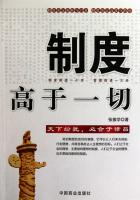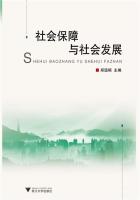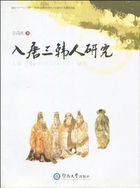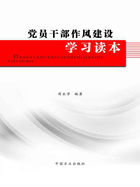[192]Chellaney B.New Delhi's Dilemma.The Washington Quarterly,2000,23(3),145~153
[193]Chellaney B.After the Tests:India's Options.Survival,1998—1999,40(4),93~111
[194]Cohen S P.Critical Dimensions of a Possible U.S.Strategic Partnership with India.USI Journal,1997,127(530),491~501
[195]Cohen S P.Nuclear Weapons and Conflict in South Asia.,Paper presented to the Harvard/MIT Security Project Seminar,November23,1998.
[196]Cohen S P.India and America:An Emerging Relationship.A Paper Presented to the Conference on The Nation‐State System and Transnational Forces in South Asia,December 8-10,2000,Kyoto,Japan.
[197]Cohen S P.India:Old Issues and New Opportunities.The Brookings Review,2000,18(4),30~33
[198]Cohen S P.India,Pakistan and Kashmir.The Journal of Strategic Studies,2002,25(4)
[199]Evans A.Reducing Tension Is Not Enough.The Washington Quarterly,2001,24(2),181~193
[200]Feinstein L,Clad J C,Dunn L A,Albright D.A New Equation:U.S.Policy toward India and Pakistan after September 11.Carnegie Endowment for International Peace,Global Policy Program,No.27,May 2002.
[201]Feldman H J.Breaking with the Past:Transforming US‐India Relations.Indian Defence Review,2002,17(4),83~85
[202]Foran,V.The Case for Indo‐U.S.High‐Technology Cooperation.Survival,1998,40(2),71~95
[203]Ganguly S.India's Pathway to Pokhran II:The Prospects and Sources of New Delhi's Nuclear Weapon Program.International Security,1999,23(4),148~179
[204]Ganguly S.South Asia after the Cold War.The Washington Quarterly,1992,15(4),173~184
[205]Garver J W.India,China,Tibet,and the Origins of the 1962 War.India Review,2004,3(2);171~182
[206]Garver J W.The China‐India‐U.S.Triangle:Strategic Relations in the Post‐Cold War Era.NBR Analysis,2002,13(5)
[207]Gottemoeller R,Longs worth R.Enhancing Nuclear Security in The Counter‐Terrorism Struggle:India and Pakistan as a New Region for Cooperation.Carnegie Endowment for International Peace,Global Policy Program,2002(29)
[208]Haass R N,etal,eds.A New U.S.Policy toward India and Pakistan.New York:The Council on Foreign Relations,1997.
[209]Haass R N,Halper in M H.After the Tests:U.S.Policy Toward India and Pakistan.Independent Task Force Report,sponsored by the Councilon Foreign Relations and The Brookings Institution,1998.
[210]Hafeez B.Understanding and Combating Terrorism in South Asia.Regional Studies,2004,22(2),79~112
[211]Haqqani H.The Role of Islam in Pakistan's Future.The Washingt on Quarterly,2004—2005,28(1),85~96
[212]Harrison S S.South Asia and the United States:a Change for a Fresh Start.Current History,1992,91(563),97~105
[213]Harrison S S.United States and South Asia:Trapped Bay the Pact.Current History,1997,96(614),401~406
[214]Harrison S S,Demp G.India and America after the Cold War.,Report of the Carnegie Endowment Study Group on US‐Indian Relations in a Changing International Environment,1993.
[215]Hartman A A,Hills C A.South Asia and the United States After the Cold War.The Asia Society,August 1994.
[216]Hashmi Z R.U.S.Policy in South Asia.Strategic Studies,2001,21(1),104~116
[217]Hathaway R M.Unfinished Passage:India,Indian Americans,and the U.S.Congress.The Washington Quarterly,2001,24(2),21~34
[218]Heisbourg F.The Prospects for Nuclear Stability between India and Pakistan.Survival,1998—1999,40(4),77~92
[219]Huque M.Nuclear Proliferation in South Asia and U.S.Policy.International Studies,1997,34(1),1~14
[220]Huque M.U.S.Relations with India and Pakistan:The Post Cold War Trends.Regional Studies,1997,15(2),67~85
[221]Jindal N.Kashmir Issue in Nuclear is South Asia.India Quarterly,2003(3-4),183~215.
[222]Joeck,N.Maintaining Nuclear Stability in South Asia. Adelphi Paper,No.312.
[223]Kamath P M.US‐India Relations since the End of the Cold War:A Factor in Reshaping US‐China Relations.Strategic Analysis,April 1993,93~104
[224]Kapur D.India in 1999.Asian Survey,2000,16(1),195~207
[225]Karim,A.War on Terrorism:the U.S.Role in South Asia.Aakrosh,2002,5(16),3~26
[226]Karl D J.Proliferation Pessimism and Emerging Nuclear Powers.International Security,1996—1997,21(3),87~119
[227]Karnad B.Perils of a Tight Embrace:India,US,Kashmir and Nonproliferation Issue.Strategic Analysis,2002,26(3),329~340
[228]Khalilzad Z,etal,eds.The United States and Asia:Toward a New U.S.Strategy and Force Posture.Rand,2001.
[229]Kissinger H.“S Must Acknowledge India's Emergence as a Major Power:An interview.India Today,1995,20(22),44~47
[230]Kozicki R J.The Changed World of South Asia:Afghanistan,Pakistan,and India after September 11.Asia Pacific Perspectives,2002,2(2)
[231]Kraig M,and Henderson J,eds.U.S.Strategy for Regional Security:South Asia.Report of the 42nd Strategy for Peace Conference,2001.
[232]Krepon M.A Ray of Hope.The Washington Quarterly,2001,24(2),175~179
[233]Kronstadt K A.India‐U.S.Relations.CRS(Congressional Research Service)Issue Brief for Congress,updated November 4,2004.
[234]Kronstadt,K.Alan,“Pakistan‐U.S.Relations”,CRS(Congressional Research Service)Issue Brief for Congress,updated October 8,2004.
[235]Kumar R.U.S.and South Asia in the New Millennium.Pakistan Horizon,2000,53(1),39~49
[236]Kux D.India's Fine Balance.Foreign Affairs,2002,81(3)
[237]Kux D.Pakistan:Flawed not Failed State.Headline Series,Foreign Policy Association,2001(322).
[238]Lansford Tom.Great Game Renewed?US‐Russian Rivalry in the Arms Trade of South Asia.Security Dialogue,2002,33(2),127~140
[239]Levi M A.Fire in the Hole:Nuclear and Non‐Nuclear Options for Counter Proliferation.Carnegie Endowment for International Peace Working Paper,2002(31).















